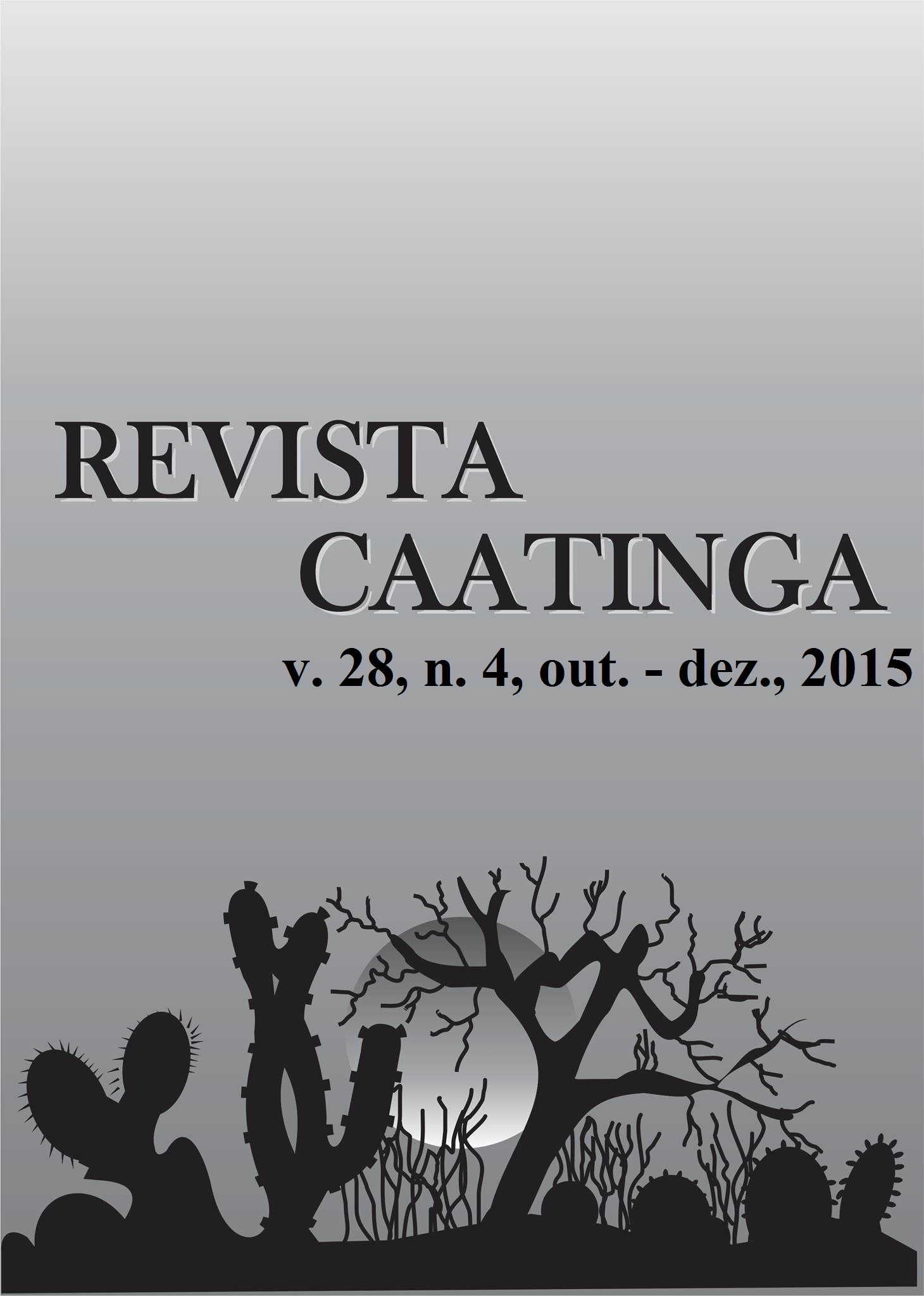PLOT SIZE AND NUMBER OF REPLICATIONS FOR CASTOR BEAN AT DIFFERENT SPACING BETWEEN PLANTS
DOI:
https://doi.org/10.1590/1983-21252015v28n428rcKeywords:
Ricinus communis L. Experimental accuracy. Plot size.Abstract
Proper planning of experiments in the culture of castor bean is one of the ways to maximize the research information. The aim of this study was to determine the optimum plot size and number of replications and the influence of spacing between plants in experiments involving castor bean crops. The experiment with the hybrid Sara was conducted at the Federal University of Santa Maria in 2010 with a spacing of 1.2 m between rows and between plants of 0.4, 0.6 and 0.8 m. Each plant was evaluated taking into account: the number of racemes, fruit weight, the average length of the racemes, and fruit number, with the plant identification by the order number of the row and the number of plants within the row. The optimum plot size is eight plants for all spacings and all variables. However, the area of optimum plot size inside the spacing depends on the area occupied by the basic unit. Thus, the plot area is 3.84, 5.76 and 7.68 m2 for each spacing of 0.4, 0.6 and 0.8 m, respectively. Twelve replications in randomized block design, are sufficient to identify, as significant at 5% probability, differences between treatment means of 27%.Downloads
References
CARGNELUTTI FILHO, A. et al. Tamanho de amostra de caracteres em híbridos de mamoneira. Ciência Rural, Santa Maria, v. 40, n. 2, p. 250-257, 2010.
CARVALHO, E. V. et al. Densidade de plantio em duas cultivares de mamona no sul do Tocantins. Ciência Agronômica, Fortaleza, v. 41, n. 3, p. 387-392, 2010.
COMPANHIA NACIONAL DE ABASTECIMENTO (Conab). Safras: série histórica (mamona). 2014. Disponível em: <http://www.conab.gov.br>. Acesso em: 10 jan. 2015.
COMISSÃO ESPECIAL DA BIOENERGIA. Mamona petróleo verde: uma alternativa de verdade. 3 ed. Porto alegre: Assembléia Legislativa do Estado do Rio Grande do Sul, 2006. 53 p. (Documentos, 1).
FRANÇA, R. G. et al. Comportamento de cultivares de mamona (Ricinus communis) sob diferentes densidades populacionais, no estado do Tocantins. Revista de Ciências Agrárias de Portugal, Lisboa, v. 36, n. 3, p. 317-323, 2013.
GOMEZ, K. A.; GOMEZ, A. A. Statistical procedures for agricultural research, 2. ed. New York: John Wiley & Sons, 1984. 680 p.
HATHEWAY, W.H. Convenient plot size. Agronomy Journal, Madison, v. 53, n. 4, p. 279-280. 1961.
HOSHMAND, A. R. Design of experiments for agriculture and the natural science. 2. ed. Boca Raton: Chapman & Hall/CRC, 2006. 456 p.
LIN, C. S.; BINNS, M. R. Relative efficiency of two randomized block designs having different plot size; numbers of replications; of plots per block. Agronomy Journal, Madison, v. 78, n. 3, p. 531-534, 1986.
LOPES, S. J. et al. Tamanho de parcela para produtividade de grãos de sorgo granífero em diferentes densidades de plantas. Pesquisa Agropecuária Brasileira, Brasília, v. 40, n. 6, p. 525-530, 2005.
MARTIN, T. N. Contribuição das bases genéticas de milho para o plano experimental. 2003. 86 f. Dissertação (Mestrado em Agronomia) - Universidade Federal de Santa Maria, Santa Maria, 2003.
MEIER, V. D., LESSMAN, K. J. Estimation of optimum field plot shape; size for testing yied in Crambe abyssinica hordnt. Crop Science, Madison, v. 11, n. 5, p. 648-650, 1971.
OLIVEIRA, S. J. R. de et al. Índice de heterogeneidade, coeficiente de variação e tamanho ótimo de parcela em batata. Ciência Rural, Santa Maria, v. 36, n. 6, p. 1710-1716, 2006.
PETINARI, R. A. et al. Custos de produção e lucratividade de cultivares de mamona em diferentes arranjos de plantas. Pesquisa Agropecuária Tropical, Goiania, v. 42, n. 2, p. 143-149, 2012.
R DEVELOPMENT CORE TEAM. R: a language andenvironment for statistical computing. Vienna, 2011. Disponível em: <http://www.R-project.org>. Acesso em: 31 jul. 2012.
SCIVITTARO, W. B.; PILLON, C. N. Calagem e adubação para a cultura da mamona no Sul do Brasil. Pelotas: Embrapa Clima Temperado, 2006. 8 p. (Comunicado Técnico, 150).
SMITH, H. F. An empirical law describing heterogeneity in the yield of agricultural crops. Journal Agricultural Science, Cambridge, v. 28, n. 1, p. 1-23, 1938.
STEEL, R. G. D. et al. Principles and procedures of statistics. 3 ed. New York: McGraw Hill, 1997. 666 p.
STORCK, L. et al. Experimentação vegetal. 3 ed. Santa Maria: UFSM, 2011. 198 p.
THOMAS, E. J. Relationship between plot size; plot variance. Agricultural Research Journal Kerala, Kerala, v. 12, n. 2, p. 178-189, 1974.
Downloads
Published
Issue
Section
License
Os Autores que publicam na Revista Caatinga concordam com os seguintes termos:
a) Os Autores mantêm os direitos autorais e concedem à revista o direito de primeira publicação, com o trabalho simultaneamente licenciado sob a Licença Creative Commons do tipo atribuição CC-BY, para todo o conteúdo do periódico, exceto onde estiver identificado, que permite o compartilhamento do trabalho com reconhecimento da autoria e publicação inicial nesta revista, sem fins comerciais.
b) Os Autores têm autorização para distribuição não-exclusiva da versão do trabalho publicada nesta revista (ex.: publicar em repositório institucional ou como capítulo de livro), com reconhecimento de autoria e publicação inicial nesta revista.
c) Os Autores têm permissão e são estimulados a publicar e distribuir seu trabalho online (ex.: em repositórios institucionais ou na sua página pessoal) a qualquer ponto antes ou durante o processo editorial, já que isso pode gerar alterações produtivas, bem como aumentar o impacto e a citação do trabalho publicado (Veja O Efeito do Acesso Livre).







